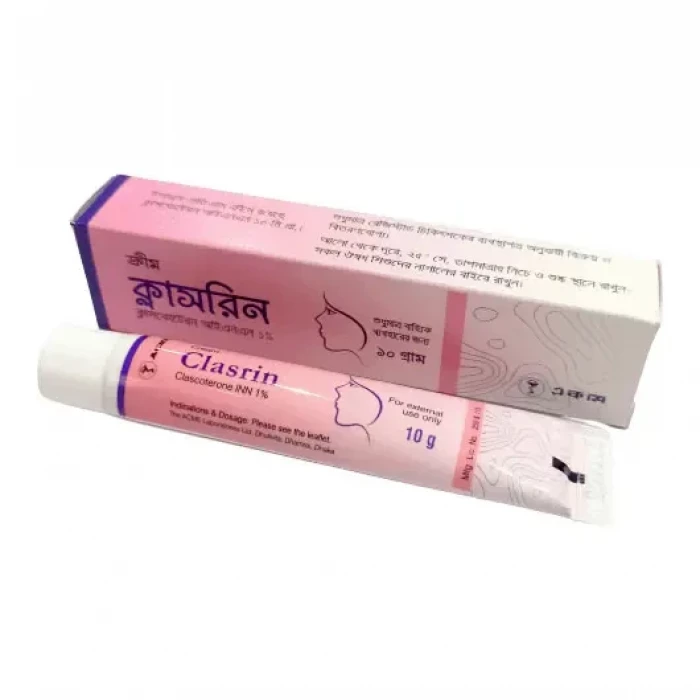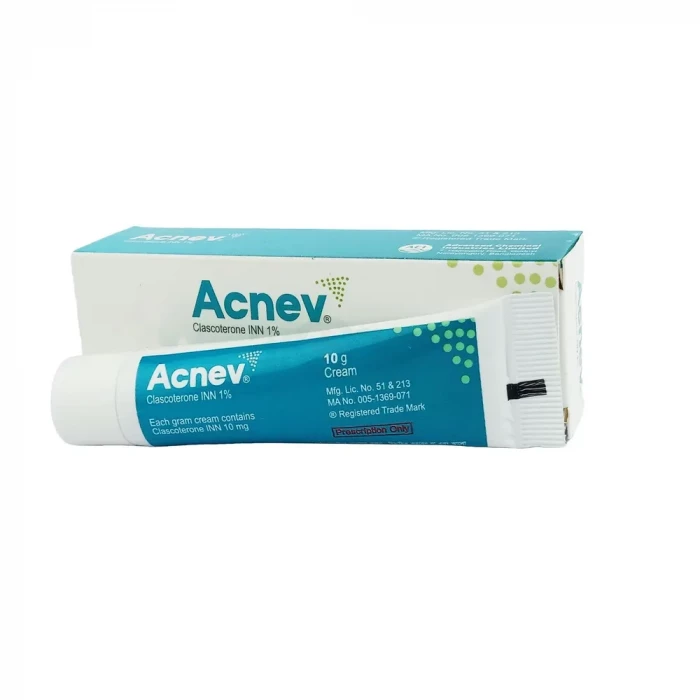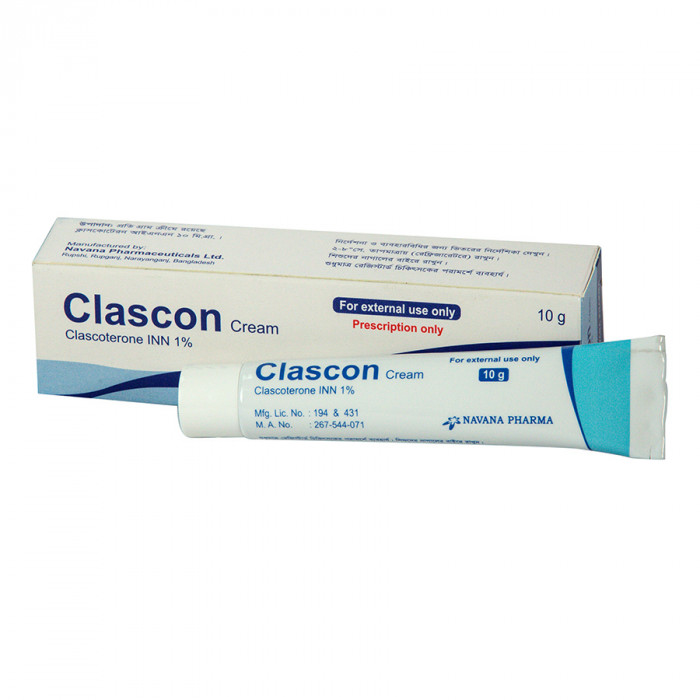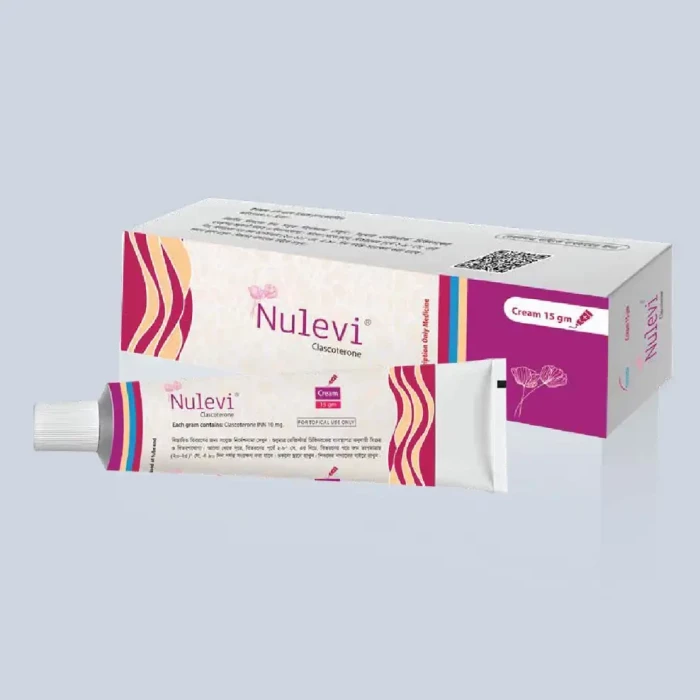
✔ 100% Authentic Product
👁️ Currently Viewing 2994
Acne is a complex skin condition involving excess oil production, thickening of the skin’s outer layer, bacterial growth, and inflammation. In males and females, natural hormones like testosterone and dihydrotestosterone (DHT) are involved in developing acne. When DHT binds to receptors, this complex moves into the nucleus, promoting genes that lead to acne-related effects like sebaceous gland growth, oil production, and inflammation. Clascoterone blocks androgen receptors, preventing DHT from binding and reducing the signaling that triggers acne.
Clascoterone can also block DHT’s effects on androgenic alopecia, as DHT interactions in hair follicles contribute to hair loss. By inhibiting DHT from binding to scalp androgen receptors, clascoterone reduces androgen receptor-related gene expression and IL-6 production.
Discount
Price: ৳ 1,176
MRP:
৳
1200
2%
Off

100% Genuine Products, Guaranteed

Safe & Secure Payments, Always

Fast, Secure & Efficient Delivery

Proper Packaging
 Cash on Delivery - All over Bangladesh
Cash on Delivery - All over Bangladesh Regular Delivery - 12-24 Hours, Dhaka City* Charge Tk.39-59
Regular Delivery - 12-24 Hours, Dhaka City* Charge Tk.39-59 Regular Delivery - 24-48 Hours, Other Cities* Charge Tk.99-110
Regular Delivery - 24-48 Hours, Other Cities* Charge Tk.99-110
 ফ্রি ডেলিভারিঃ - ৯৯৯ টাকা+ অর্ডারে, ঢাকা
শহরে
ফ্রি ডেলিভারিঃ - ৯৯৯ টাকা+ অর্ডারে, ঢাকা
শহরে ফ্রি ডেলিভারিঃ - ২৯৯৯ টাকা+ অর্ডারে, ঢাকার
বাহিরে
ফ্রি ডেলিভারিঃ - ২৯৯৯ টাকা+ অর্ডারে, ঢাকার
বাহিরে
100% Genuine Products, Guaranteed
Safe & Secure Payments, Always
Fast, Secure & Efficient Delivery
Proper Packaging
 Cash on Delivery - All over Bangladesh
Cash on Delivery - All over Bangladesh Regular Delivery - 12-24 Hours, Dhaka City* Charge Tk.39-59
Regular Delivery - 12-24 Hours, Dhaka City* Charge Tk.39-59 Regular Delivery - 24-48 Hours, Other Cities* Charge Tk.99-110
Regular Delivery - 24-48 Hours, Other Cities* Charge Tk.99-110 ফ্রি ডেলিভারিঃ - ৯৯৯ টাকা+ অর্ডারে, ঢাকা
শহরে
ফ্রি ডেলিভারিঃ - ৯৯৯ টাকা+ অর্ডারে, ঢাকা
শহরে ফ্রি ডেলিভারিঃ - ২৯৯৯ টাকা+ অর্ডারে, ঢাকার
বাহিরে
ফ্রি ডেলিভারিঃ - ২৯৯৯ টাকা+ অর্ডারে, ঢাকার
বাহিরে
✅ Description:
Acne, commonly referred to as acne vulgaris, is a skin condition that arises when pores and hair follicles become clogged with sebum, an oily substance from skin glands. Acne is typically seen on the face but can also develop on the chest, shoulders, and upper back.
Types of Acne
- Comedogenic Acne (Non-inflammatory): Appears as whiteheads and blackheads.
- Non-comedogenic Acne (Inflammatory): Red, painful, and often pus-filled pimples.
Key Facts
- Prevalent Age Groups: Children (13-18) and adults (25-40).
- Gender: Affects both men and women, but is more common in women.
- Involved Area: Skin.
- Global Prevalence: 9.4% (as of 2015).
- Mimicking Conditions: Conditions like rosacea, folliculitis, and perioral dermatitis can resemble acne.
Diagnostic Tests
- Hormonal evaluations: Luteinizing Hormone, Follicle-Stimulating Hormone, and Dehydroepiandrosterone (DHEA) tests may be needed.
Treatment Options
- Retinoids: Retinoic acid, Tretinoin, Adapalene.
- Antimicrobials: Azelaic acid.
- Topical Antibiotics: Clindamycin, Azithromycin.
- Anti-Acne Agents: Salicylic acid.
- Systemic Antibiotics: Doxycycline, Minocycline.
- Oral Treatment: Isotretinoin.
Symptoms of Acne
Acne manifests as clogged pores leading to pimples, blackheads, or skin nodes. Typical symptoms include:
- Red, painful skin around acne spots.
- Potential darkening or scarring over time.
- In rare, severe cases, symptoms may include fever and joint pain.
Types Based on Symptoms
- Comedogenic Acne:
- Whiteheads: Small, white lesions filled with sebum and dead cells.
- Blackheads: Dark bumps formed from open pores.
- Non-Comedogenic Acne:
- Papules: Small, painful bumps.
- Pustules: Red pimples with pus.
- Nodules: Large, solid pimples deep in the skin.
- Cysts: Deep, pus-filled, painful pimples that may scar.
Severe cases, known as nodulocystic acne, can cause larger, hardened masses, especially on the back and neck.
Common Causes of Acne
- Hormonal Changes
- Genetics
- Environmental Factors
- Lifestyle Factors
- Health Conditions
- Chemicals/Products
Treatment Options
Acne treatments include topical, systemic, and lifestyle approaches:
- Topical: Prescription creams or cleansers.
- Systemic: Antibiotics or hormonal therapies.
- Lifestyle: Diet changes, adequate hydration, and exercise. Proper treatment can help prevent future scarring.
General physicians, dermatologists, and gynecologists can help manage and treat acne effectively.
Safety Advices
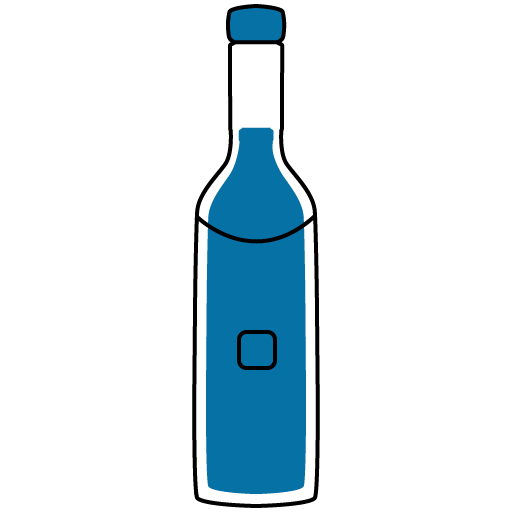
Alcohol
UNSAFE
No interactions were found/established. Please consult your doctor if you have any concerns.

Pregnancy
CONSULT YOUR DOCTOR
Please consult your doctor before using Nulevi if you are pregnant or planning to conceive.
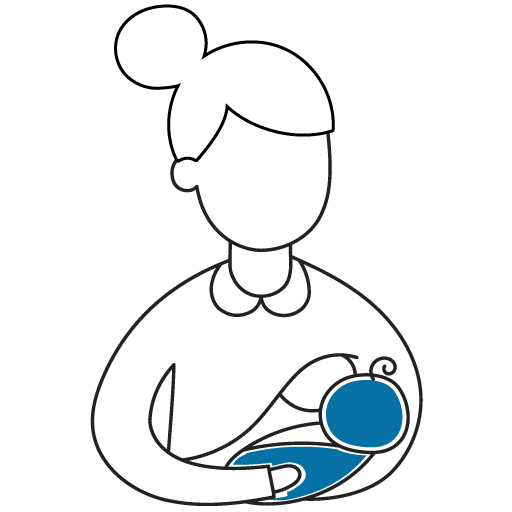
Breastfeeding
CONSULT YOUR DOCTOR
Please consult your doctor before using Nulevi if you are breastfeeding. If you need to apply the cream, gel, or lotion on your breasts, don't do this shortly before giving a feed.

Driving
SAFE
Nulevi has no or negligible influence on the ability to drive or use machines.
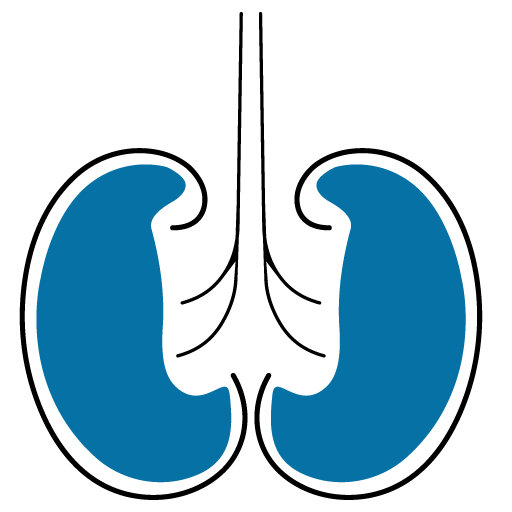
Kidney
SAFE IF PRESCRIBED
Let your doctor know if you have any history of kidney diseases before using Nulevi

Liver
SAFE IF PRESCRIBED
Let your doctor know if you have any history of liver diseases before using Nulevi
✔️ Uses: Nulevi 1% Cream
Acne
✔️ How does Nulevi 1% Cream work?
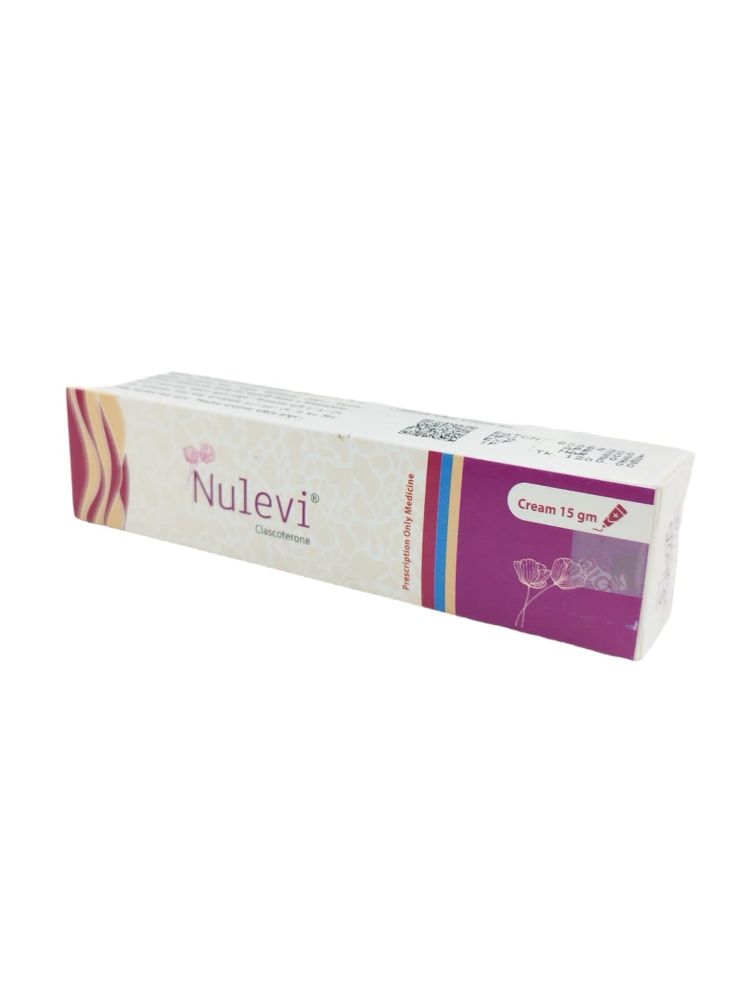
Nulevi contains clascoterone which works by inhibiting bacterial protein synthesis, which inhibits bacterial growth. It shows a bacteriostatic effect, which stops bacterial reproduction but doesn't kill them.
✔️ Side Effects of Nulevi 1% Cream
- Burning sensation
- Itching
- Dryness
- Redness
- Oily skin
- Peeling of the skin
✔️ Quick Suggestions:
- Consult your dermatologist if you do not notice any improvement after 4-6 weeks of treatment with Nulevi 1% Cream.
- Foam products are flammable; keep them away from flames and extreme heat. Do not puncture or incinerate the foam canister.
- If the acne doesn't improve, an ultrasound scan of the abdomen is advised to check if there is any possibility of PCOD (Polycystic Ovarian Disease).
✔️ Indications: Nulevi 1% Cream
Clascoterone is an androgen receptor antagonist used for the topical treatment of acne vulgaris in patients 12 years of age and older. This medicine is available only with your doctor's prescription.
✔️ Dosage of Nulevi 1% Cream
- For Topical dosage form (cream):
- For acne:
- Adults and children 12 years of age and older—Apply a thin layer to the affected area(s) of the skin 2 times a day, in the morning and the evening.
- Children younger than 12 years of age—Use and dose must be determined by your doctor.
- For acne:
✔️ How to use Nulevi 1% Cream
To apply Clascoterone cream, gently cleanse the affected area and ensure it is dry. Apply a thin layer to the affected skin twice daily, once in the morning and once in the evening. Be cautious not to let the cream contact your eyes, mouth, or other mucous membranes; if it does, rinse thoroughly with water. This cream is intended for topical use only, and it should not be used in the eyes, mouth, or vaginal area.
✔️ Pediatric Use: Nulevi 1% Cream
Clascoterone’s safety and efficacy are established in patients aged 12-18 through clinical trials and pharmacokinetic studies. It is not recommended for children under 12 due to insufficient data.
✔️ Geriatric Use: Nulevi 1% Cream
Clascoterone was not specifically studied in patients over 65, so dose selection should start cautiously, taking into account potentially reduced liver, kidney, or heart function common with aging.
✔️ Interaction
No clinical study evaluating the drug interaction of Nulevi cream has been conducted.
✔️ Contraindications
Data on the contraindication of clascoterone cream is not available.
✔️ Pregnancy & Lactation: Clascoterone
Pregnancy: There is no clinical data on the effects of Clascoterone cream in pregnant women, so potential risks to the fetus are unknown. Animal studies indicate that when clascoterone is administered at higher doses than the maximum human dose, there are increased malformations and pregnancy loss in animals. The background risk of birth defects and miscarriage for acne patients is unknown, though for the general U.S. population, these risks are estimated at 2-4% and 15-20%, respectively.
Lactation: There is no information on whether clascoterone or its metabolites are excreted in human breast milk or on its effects on a breastfeeding infant or milk production. The potential benefits of breastfeeding should be considered alongside the mother’s treatment needs and possible risks to the infant.
✔️ Precautions & Warnings
Local Skin Reactions: Clascoterone may cause local skin irritation, such as redness, itching, dryness, and scaling. Using other potentially irritating topical products, including harsh soaps, alcohol-based cosmetics, or astringents, should be minimized. Avoid applying to broken, cut, or sunburned skin.
HPA Axis Suppression: Clascoterone may suppress the hypothalamic-pituitary-adrenal (HPA) axis, particularly when used on large areas of skin, for prolonged periods, or with occlusive dressings. If HPA suppression occurs, discontinue use gradually. Pediatric patients may have a higher risk of systemic side effects.
✔️ Storage:
Store below 30°C, away from light and moisture, and keep out of reach of children. Do not keep outdated medicine or medicine no longer needed.
⚠️Disclaimer:
At ePharma, we’re committed to providing accurate and accessible health information. However, all content is intended for informational purposes only and should not replace medical advice from a qualified physician. Please consult your healthcare provider for personalized guidance. We aim to support, not substitute, the doctor-patient relationship.




